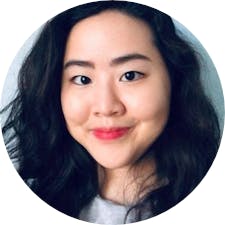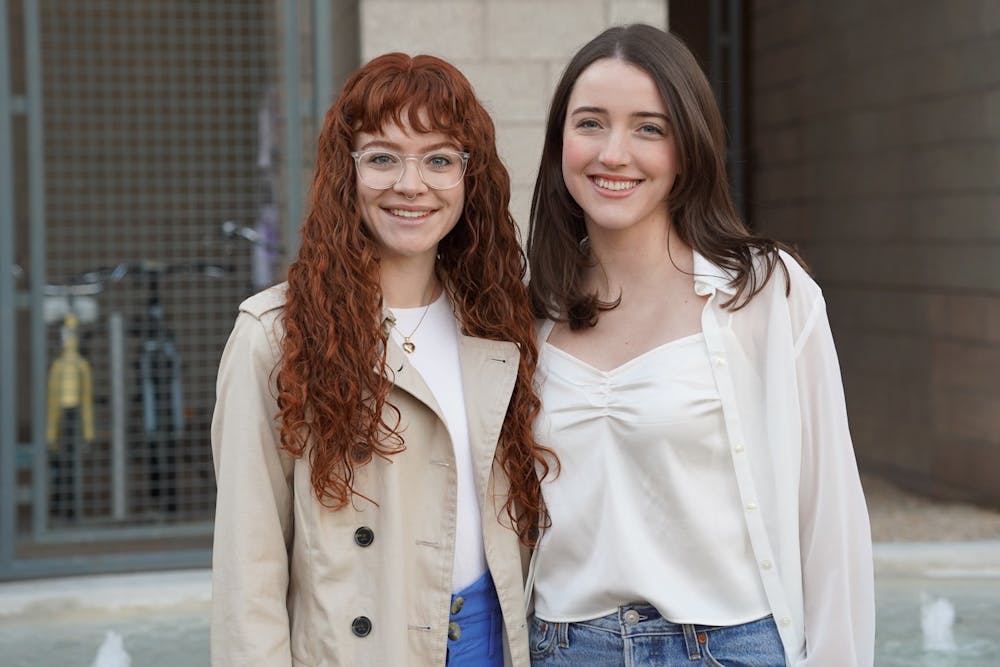Loneliness among elderly adults skyrocketed during the pandemic. Two Barrett, The Honors College students are developing a mobile app to help alleviate social isolation and loneliness among older individuals as a result of COVID-19 induced quarantines.
Claire Pishko, a senior studying biochemistry, and Haley Harelson, a senior studying data science, are working to develop the app in conjunction with the Luminosity Lab to connect elderly individuals with one another. The idea for the app was inspired by their honors thesis investigation into how the solitary nature of COVID-19 impacted adults age 50 and older.
According to a study by the National Academies of Sciences, Engineering, and Medicine, more than one-third of adults aged 45 and older feel lonely, and nearly half of adults aged 65 and older are considered to be socially isolated. The study reported that poor social relationships characterized by social isolation or loneliness were associated with a 29% increased risk of heart disease and a 32% increased risk of stroke.
The students' thesis project uncovered six common strategies elderly adults used to successfully overcome feelings of social isolation and loneliness. One of those six strategies was adapting to new forms of communication. Some examples of this include email, phone calls, social networks like Facebook and Instagram, instant messaging and Zoom.
Pishko said they plan to incorporate a video feature and a chat feature and possibly some resources for older adults into the app, but most importantly they “want to have a super simple user interface so it’s accessible to everyone regardless of their technology levels.”
The Luminosity Lab, which is partnering with the students to create the app over the next few months, has been working closely with Zoom through the University's partnership with the company.
“We are going to be given access to Zoom software development kit including a suite of their products,” Harelson said.
With Zoom’s software development kit, Harelson said the goal is to create “an app with three simple main functions: video calling, audio calling and a really simple text feature, stripping away unnecessary user interface elements and making it extremely minimal and simplified so that people who don't have a lot of literacy using technology are able to access it and get all the same benefits that we might from the normal version of Zoom."
Using their kit will help “create some custom functionality like making it easier to answer calls with their voice,” said Mark Naufel, executive director of the Luminosity Lab.
The students' complementary objectives for the thesis project provided for an innovative approach to an increasingly worrisome issue in the U.S.
Pishko was interested in unveiling the underrepresented health risks resulting from social isolation and loneliness. Harelson co-founded the project with the goal of learning data analysis techniques and performing complex data visualizations.
Pishko liked the idea of making an app because of its potential long-term impact and its general accessibility to the team's targeted audience.
“One of the main ways people avoided isolation was through remaining connected with friends and family and adapting to new forms of communication,” Pishko said. “However, there’s a lot of barriers for older adults using technology. When a lot of their normal modes of communication changed (during COVID-19), it was really hard for a lot of older adults.”
“This app meets the needs of many people,” Nafuel said. “Any time we can find a great idea that is in the classroom and bring it to an environment where we have students from all disciplines that can actually rapidly design it, develop it, test it and get it launched for people to use is really ideal.”
Harelson and Pishko will be conducting user research before deciding on a name for the app and plan to have the beta software ready for testing in the next couple of months. They are hoping to have the app fully launched by the summer.
The students plan on reaching out to the retirement community at Mirabella at ASU to have older residents there test their app as a way to “get the ASU community involved,” Harelson said.
The app will aim to assist anyone who is experiencing social isolation and loneliness, not just older individuals.
“It doesn't have to only be used by older adults,” Harelson said. “There are other groups that experience social isolation and loneliness as well including children who are immunocompromised, who are maybe at the hospital and can't leave their room.”
They will be releasing their app to the public for free on all devices and operating systems as a way to help people and ease their communication.
“We are going the make the app agnostic so it functions well on iOS, Android, tablet and desktop,” Harelson said.
Reach the reporter at mindy.lok1@gmail.com and @minn_lk on Twitter.
Like The State Press on Facebook and follow @statepress on Twitter.

Mindy Lok is a reporter for the business and tech desk. She also works as a digital content producer for the College of Health Solutions.




